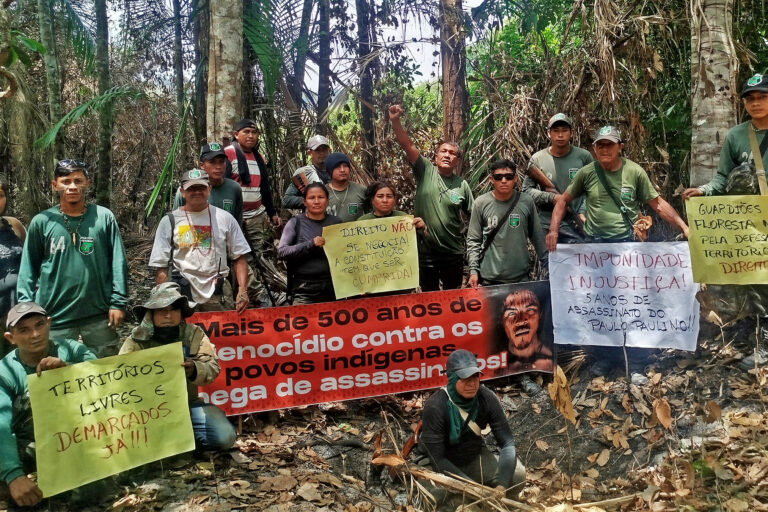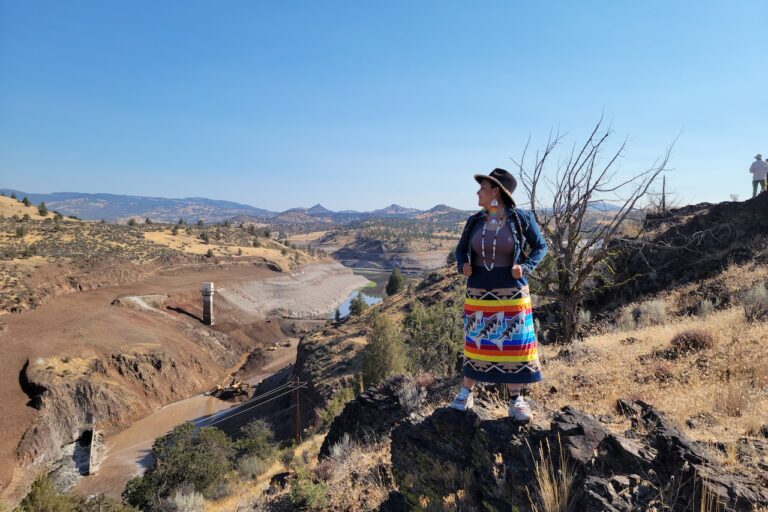
- For five years, a farmer in Brazil disregarded biosafety measures and advanced into areas that prevented contamination of native cotton.
- In May 2024, Embrapa, which owns patents for genetically modified cotton, managed to eliminate the exclusion zones in Mato Grosso state.
- Indigenous people fear that the authorization to plant genetically modified cotton throughout the state will lead to contamination of their native varieties, which are used for handicraft production and medicinal purposes.
For five years, genetically modified cotton was planted in an illegal area in Mato Grosso state, openly disregarding a biosafety measures created by the Ministry of Agriculture, Livestock and Food Supply (MAPA). Mongabay found plantations of GM cotton in the municipality of Marcelândia, 641 kilometers (400 miles) from the state capital Cuiabá, where agribusiness is the main economic activity.
Until early May 2024, genetically modified cotton plantations were banned from 31 municipalities in Mato Grosso, in an area considered an exclusion zone under Ministry of Agriculture Ordinance 437. The protection, lifted with strong support from Embrapa, a government corporation that holds GM cotton patents, was aimed at preventing contamination of native cotton, a natural seed used by family farmers as well as Indigenous and Quilombola communities.
A seed is considered genetically modified when it receives a gene from another living being in order to acquire some new characteristic, usually resistance to pests and herbicides, which favors large-scale production intended for export — the basis of Brazil’s agribusiness.
Genetically modified seeds have been planted within the exclusion zone since 2019, starting as a trial at the Modelo farm. After adjustments, commercial-scale cultivation began at the Nossa Senhora de Nazaré farm. Both are owned by mega-producer Gilson Pinesso and are located in Marcelândia, a municipality with just over 10,000 inhabitants.
At the Modelo farm, a 5-hectare (12-acre) plantation yielded 320 arrobas or 4,800 kilograms (10,580 pounds) of cotton. This year, commercial plantations at the Nossa Senhora de Nazaré farm, 18 km (11 mi) from the urban area, expanded to 4,000 hectares (9,880 acres). In Mato Grosso, a cotton arroba is now sold for 124.65 reais ($22) on average.
We interviewed Gilson Pinesso by telephone. We asked him for details about the beginning of the harvest as well as the type of seed used. We also asked if he knew that the ban imposed by the federal government was still in force when he started planting with the genetically modified seeds.
In a recorded interview, Piinesso admitted to committing the violation and justified it by saying they “received this information [that cultivation of GM cotton was banned from the area] when planting was at a very advanced stage.”
With the conversation already over, Pinesso sent a WhatsApp message saying the interview had been “biased” and that he no longer authorized the publication of the information he had provided.
We tried to speak to him again by phone, but he refused to answer our calls. Since the conversation was recorded with Pinesso’s consent and only later did he request that it not be published, we decided to keep his full answer and include his version in this report (listen to full interview here).

Gilson Ferrúcio Pinesso was born in Engenheiro Beltrão, Paraná, and has a degree in economics. He was the president of the Pinesso Group, which belonged to his family and went into judicial recovery in 2015, due to debts estimated at 571 million reais at the time.
In 2021, the courts concluded the case of the Pinesso Group, which was renamed as The Produzir Group. On its official website and LinkedIn profile, the company claims it produces soybeans, cotton and corn in the states of Mato Grosso, Mato Grosso do Sul and Piauí and also started a farming project in Sudan, northeastern Africa, in 2010.
In addition to being an international producer, Pinesso has been involved in agribusiness organizations, with a strong presence in political and lobbying groups in decision-making spaces. He was the president of Abrapa, the Brazilian Association of Cotton Producers, and the Mato Grosso Association of Cotton Producers, AMPA.
Pinesso was also the founder and president of the Cooperative of Producers in Brazil’s Cerrado, COABRA, and one of the organizers and founders of the Mato Grosso Social Cotton Institute, IAS. He was also a member and president of the Mixed Agribusiness Cooperative, COMDEAGRO.
As a result of his influence, Pinesso appeared in a long news story on cotton production in Marcelândia, aired on Record TV’s Balanço Geral show in June 2023.
In the video, Pinesso praises the start of the operation of a cotton harvesting machine — according to him — for its capacity to “create 70 direct jobs and several indirect ones” in Marcelândia.
The story also highlights that it produces more than “300 arrobas” and that “expectations for the 2023 harvest season are high.” Today, 300 arrobas is equivalent to 4,406 kg (9,700 lbs).
By email, we asked MAPA if it was aware of genetically modified cotton plantations in Mato Grosso’s exclusion zone. We also asked the ministry what type of sanction applies in such cases and how these biosafety measures are monitored. MAPA had not replied by the time this article was finished.

Embrapa’s moves to eliminate the exclusion zone
While monitoring of biosafety standards should be improved to avoid circumventions such as those practiced at the Modelo and Nossa Senhora de Nazaré farms in Marcelândia, what happened was exactly the opposite.
Genetically modified cotton plantations were fully authorized in Mato Grosso, in a process marked by several conflicts of interest. The removal of the state from the exclusion zone was approved by the National Technical Commission on Biosafety (CTNBio) in a vote held in early May 2024.
When contacted by Mongabay, CTNBio released a note explaining that “in view of the new data, it is clear that gene flow is not an issue for native and naturalized cotton plants, since the flow occurs inside and outside the group, without loss of diversity.”
The vote was based on a report produced by Embrapa Cotton indicating there was no risk of contamination of native cotton by modified genes through cross-pollination, which occurs when insects carry pollen from one plant to another.
The report states that “the only species found that is different from the cultivated one is Gallini cotton” and that this variety does not favor contamination through pollen transfer from one plant to another, as the document concludes. This variety is used by traditional peoples and communities for handicraft production and medicinal purposes.
The research supporting the report involved four field expeditions covering four of the five regions of the state; 47 of Mato Grosso’s 141 municipalities were visited, 22 of which were located within the exclusion zone. Gallini (Gossypium barbadense) was found in 453 of the 465 locations visited, or 97.4% of the coverage area. Even though genetically modified cotton was present in almost 100% of the sample analyzed, its plantation was authorized throughout the state.
However, experts representing the environmental cause interviewed by Mongabay claim that Embrapa’s data, which formed the basis for the CTNBio decision, included inaccurate information.
Agronomist Gabriel Fernandes, a CTNBio member appointed by the Ministry of Environment, states that “a coexistence and exclusion rule must consider all forms of crossbreeding, that is, mixing and dispersing seeds, because the plant will sprout, flower and then it will continue with the crossbreeding process.” Fernandes is the author of the request for examination that suspended the process.
In other words, contamination occurs not only through pollination by insects but also through seed circulation and exchange, a very common practice in the region.

In addition to producing the report, Embrapa Cotton also appears as a petitioner in the process aimed at eliminating exclusion zones in Mato Grosso. This is the first time that the state-owned company, a technical agency, has made such a request.
In 2013, genetically modified cotton plantations were also authorized in the state of Tocantins at the request of the state government. In 2016, the state of Roraima also eliminated exclusion zones based on a request from the agriculture ministry itself. The ministry also asked for the zones to be lifted in Rondônia in 2018, which was granted by CTNBio after a vote.
The exclusion zones for genetically modified cotton were created in 2005 to avoid contamination of native and naturalized cotton species. The latter varieties are not originally from Brazil. They arrived here a long time ago and were naturally improved and incorporated into the country’s biomes.
Interest in selling genetically modified seeds
Embrapa is the author of the request to lift exclusion zones in Mato Grosso. It also holds 10 patents for genetically modified cotton, with recommendations for use in several parts of Brazil, including that state.
Two CTNBio members representing Embrapa Cotton who participated in the decision — Marcelo Henrique Aguiar de Freitas and Alexandre Lima Nepomuceno — voted to approve the planting of genetically modified seeds throughout the state. In these cases, members usually declare a conflict of interest and recuse themselves.
After all, with the increase in genetically modified cotton production in Mato Grosso, farmers should demand more seeds from Embrapa Cotton, which benefits the production of the state-owned company.
In a note, the CNTBio stressed that the possibility of recusal is provided for in Executive Order 5591/2005 and in the commission’s internal regulations, in order to guarantee objectivity in the review process.
However, it also emphasized that “recusal does not apply in cases in which processes at the institution to which [the members in question] belong are not related to activities and projects developed at the CTNBio unit to which they are linked.”
The state of Mato Grosso is Brazil’s largest cotton producer. Much of the cotton that makes the country the second-largest producer in the world, only behind the United States, comes from that state. These results are achieved by using biotechnology and pesticides.
To illustrate it, 89% of all cotton grown in Brazil is now genetically modified, according to the latest bulletin from the Céleres consulting group, published in 2019.

According to Gabriel Fernandes, the authorization for large-scale cotton plantations in the area that used to be an exclusion zone can be seen as opening an expansion frontier for agribusiness into biomes such as the Cerrado and the Amazon.
“This biosafety measure has been dismantled to meet economic interests. And there is no scientific basis for that, since Embrapa Cotton’s own research revealed contamination inside and outside the exclusion area,” he says.
Furthermore, the process leading to the removal of Mato Grosso from the exclusion zone has the same number as another process that was reviewed in April 2023 and requested the removal of the municipality of Santana do Araguaia, Pará.
Note that, in the aforementioned process, Santana do Araguaia is mistakenly called a microregion when it is actually a municipality in the far south of Pará.
The request was reviewed and voted on during the 260th CTNBio meeting at the request of the Pará Cotton Producers Association, APAP. The decision was included in the minutes of the meeting, starting on line 755.
A year later, in April 2024, the same process returned to CTNBio’s agenda, at its 270th meeting, but now requesting authorization to plant genetically modified cotton throughout the state of Mato Grosso.
We contacted Embrapa Cotton, asking for its views on the corporation’s several actions in the process of removing Mato Grosso from the exclusion zone. They had not responded by the time this article was finished.
We contacted the press office of the Ministry of Science, Technology and Innovation about the status of the process to create the exclusion zone in Mato Grosso. They asked for more time, which we granted them, but we did not receive any response.
CTNBio, in turn, says the first classification presented at its 270th meeting was proposed by the staff of the CTNBio executive secretariat but, “the error was pointed out by the Commission and rectified in the same meeting, with the correction published on the agenda of the 271st Meeting.”

Researcher changed sides
Another point that confuses the defense of society’s economic interests with those of large corporations is the stances taken by researcher Paulo Vianna Barroso. He has taken part in decisions favorable to both the preservation of biodiversity and the expansion of large-scale cotton plantations.
In 2005, Barroso was the president of Embrapa Cotton and played a direct role in the creation of exclusion zones for genetically modified cotton. He is also the author of the document that justified the removal of Tocantins from the exclusion zone, reducing that biosafety area for the first time.
According to an article published on Embrapa’s website, he gave a lecture on the cultivation of genetically modified cotton in Roraima, which, in 2016, became the second state to be removed from the exclusion zone.
In another story, this time published in the magazine Cultivar, he appears as one of the participants in the 4th International Conference on Coexistence between Genetically Modified (GM) and non-GM based Agricultural Supply Chains.
The article includes the following statement by Barroso: “In fact, coexistence is an economic discussion whose main function is to establish procedures that guarantee segregation in chains so that adventitious presence of GMOs in conventional products does not exceed the thresholds set by the legislation of each country.”
One of the findings of a study published in the journal Desenvolvimento e Meio Ambiente refutes the researcher’s statement. The study indicates that one-third of native corn in the semiarid region is contaminated with modified genes. In some cases, the study states, up to seven such genes were found in a single grain.
According to Rubens Nodari, a researcher and professor of the Department of Plant Science of the graduate studies program in plant genetic resources at the Federal University of Santa Catarina (UFSC), “when native grains are contaminated, they become hybrids. Coexistence is not just an economic issue. It is about harmony between farmers who grow genetically modified and native crops and the preservation of genetic heritage,” he says.
The research reveals that Brazil has 23 corn breeds as well as hundreds of other varieties. A breed is a set of varieties that are related to each other. The semiarid region, where the research was conducted, is the only one with endemic varieties of corn; that is, which only exist there. “Contamination breaks this adaptation achieved by years of protection and seed storage,” he explains.
Finally, he says, “Mr. Barroso has always advocated a minimum distance between genetically modified and native crops. For some time now, he has adopted the companies’ view as his own. He is a researcher at Embrapa, but he has the companies’ discourse,” Nodari says.
Researcher Paulo Vianna Barroso was the president of the CTNbio for two terms: 2006-10 and 2019-23. He was a head of the commission during the vote on the request to remove the municipality of Santana do Araguaia from the exclusion zone.
Indigenous people fear the advance of GMOs
Indigenous peoples from Mato Grosso fear that, with the end of the exclusion zone, all of the state’s native cotton will be contaminated by genetically modified species, affecting the production and customs of traditional communities.
According to a report produced by Operation Amazônia Nativa (OPAN), in 2021, eight Indigenous groups managed native cotton in the state: the Mỹkỹ, the Tapirapé, the Bakairi, the Yudja, the Kayabi, the Mehinako, the Enawene Nawe and the Bororo.
Quilombola communities using native seeds were found in the municipalities of Cáceres, Mirassol d’Oeste, Cuiabá, Jangada, Nossa Senhora do Livramento, Poconé and Chapada dos Guimarães.
Still, according to the research, the mapping is not complete due to restrictions, since the survey was conducted in the middle of the pandemic. In practice, the area involving native seeds may be even larger.

Yabá Juruna, 43, is a member of the Yudja Indigenous group and lives in Tuba Tuba village, 186 km (116 mi) from the center of Marcelândia. Several generations of his family have cultivated native cotton, which is called makua in his native language. The varieties produced are makua awïīwïī, which stands for white cotton in Portuguese, and kame’ãwï makua, or brown cotton.
Yabá plants cotton seeds intercropped with cassava in October and harvests them between July and August of the following year. Harvesting is done by his wives, who use feather cotton to make hammocks and belts to support arrow tips. Some of these pieces are sold and generate income for the community.
A portion of the seeds is stored in gourds or plastic bottles to be planted the following year. “The seeds are also used by shamans in ‘spear rituals’ to cure the sick. They also serve to alleviate pain and heal wounds,” Yabá explains.
He says he does not know if his native cotton has ever been contaminated with modified genes, but he guarantees that the pesticides used on large-scale plantations — cotton, soy or corn — have affected his community.
“We live near the Manito River, which is contaminated with pesticides thrown on the plantations. A lot of dead fish appear. Whitemouth croaker, flatwhiskered catfish, redtail catfish — all fish that we eat and appear dead,” he explains.
Gabriel Fernandes explains that by authorizing cultivation of GMOs, the CTNBio violates the rights of small farmers. “They want to say that the only cotton crop that counts is monoculture. That is a prejudiced way of referring to these farming families who use cotton in other ways. It means that cotton can disappear because it has no economic importance, and if it disappears, it will only be found in the gene bank,” the researcher says.
Koparauki is a woman from the Mỹkỹ Indigenous group and grows native white and brown cotton varieties in the Menkü Indigenous Land, in Brasnorte, western Mato Grosso. In 2022, Brasnorte was considered the 24th-richest agribusiness city in Brazil by the agriculture ministry, as a result of crops such as corn, soybeans and cotton.

Surrounded by a vast expanse of commodity monocultures, Koparauki maintains her native cotton plantation and stores the seeds in bags that are left near the wood-burning stove. “We store the seeds near the fire to preserve them,” she explains.
The cotton harvested is used to make bags, hammocks, blankets and zamatas, slings used by Indigenous women to carry their babies. These items are also sold to order.
Koparauki, a mother of three, says she is already worried about some problems that affect her production of native cotton. She usually plants it between November and December, but this year, even though she planted at the right time, she claims to have had losses. “This year there was little rain, and many seeds haven’t sprouted. We only harvested six bags, about 9 kg [20 lbs] of cotton,” she says.
Pesticides have also been keeping Indigenous Mỹkỹ families up at night. “They [large producers] always planted soybeans and corn, but now they’ve planted cotton. Sometimes, the tractor passes a little too close and the pesticides reach us,” she says.
Koparauki says that when she learned about the existence of genetically modified cotton, she became much more worried. “Before contact with white people, we had lots of cotton without pesticides. After whites came close, [native] cotton was reduced. Now, there’s this modified cotton that could affect us. We can’t be without our cotton,” she says, worried.
Banner image: Cultivation of transgenic cotton in Mato Grosso. Image by: Christiano Antonucci/Secom-MT
This story was first published here in Portuguese on Oct. 29, 2024.








